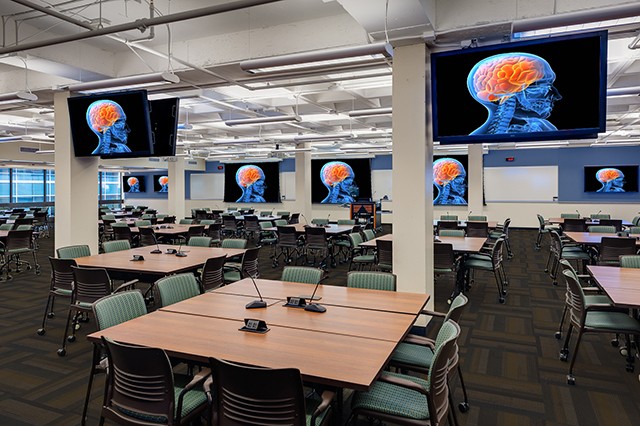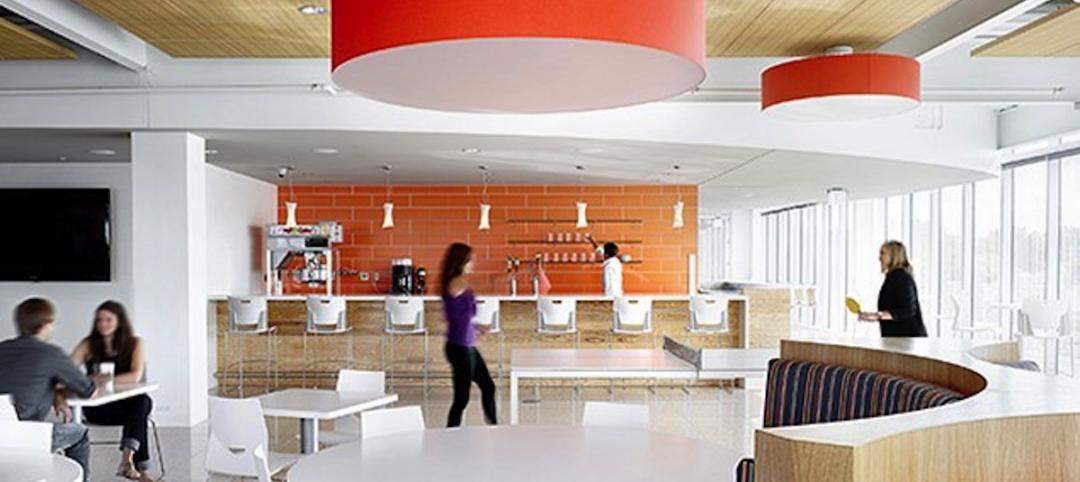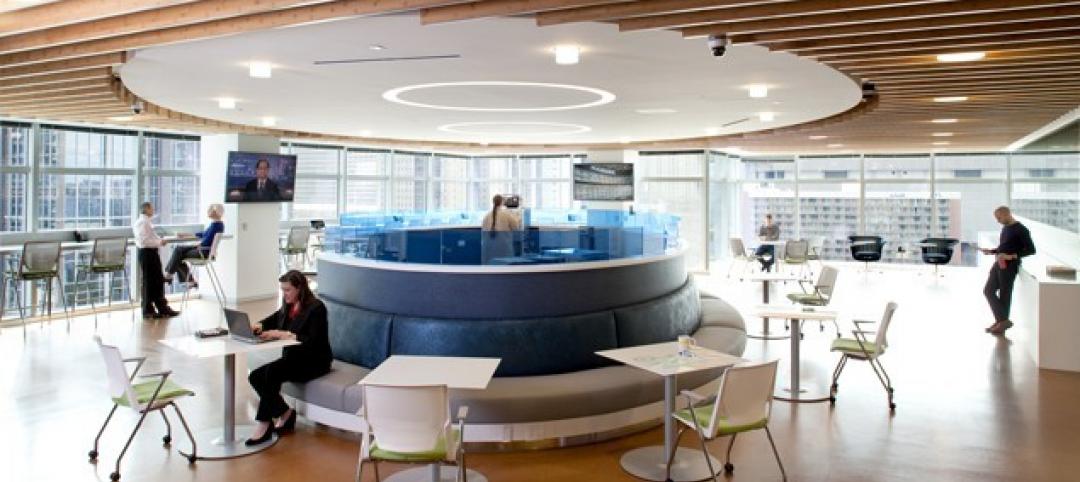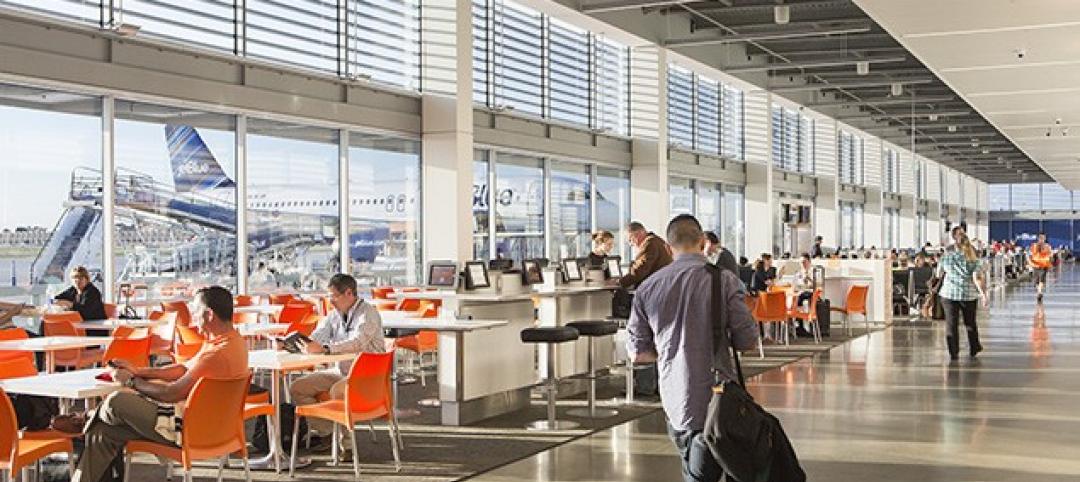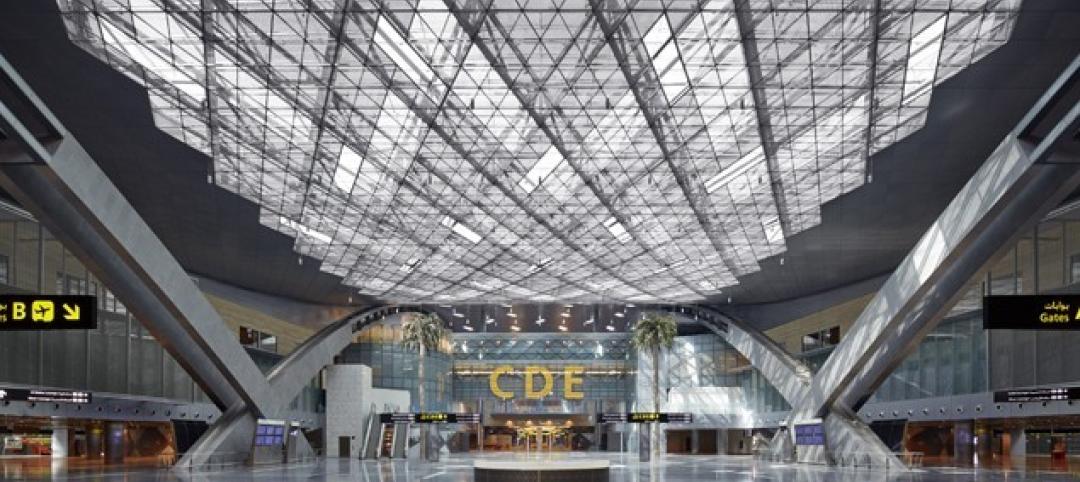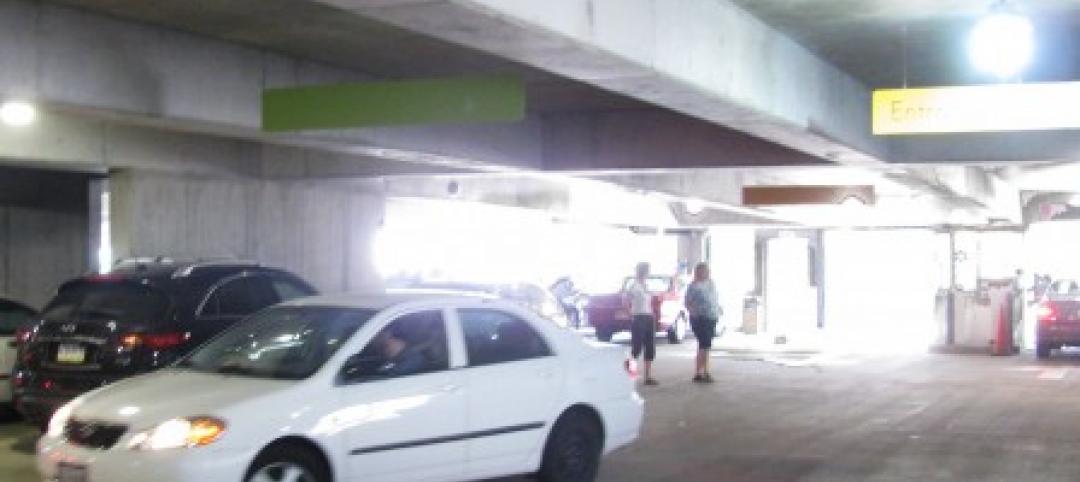As undergraduate science educators adjust to changing science, technology, engineering and mathematics (STEM) curriculum, academic institutions must create new types of learning environments.
New technology and changing pedagogies are influencing how to best teach a generation of learners who have never known a world without smartphones or tablets. Architects and designers must become partners in creating the dynamic science teaching facilities required for undergraduate STEM education.
By understanding today’s students and envisioning how learning will continue to evolve, we can shape the structures and spaces that support new teaching methods and evolving educational missions.
DRIVERS OF CHANGE
Several significant trends are impacting the design and function of today’s science classrooms:
- A generation of students who learn and communicate differently from previous generations.
- Integrated technology in classrooms, teaching labs and other student spaces.
- Redesigned course delivery that includes a blend of in-person and online experiences.
- A recognition of the value of small group work where students learn from and support each other.
- Intentional learning, in which students become advocates of their own education.
- A goal to increase retention of students completing their degree in a STEM field.
- The need to equip students to enter a competitive workforce with broad-based skills, adaptability and critical thinking acquired through a high-quality educational experience.
FLIPPING THE CLASSROOM
Technology has empowered students to complete much of their learning – whether it’s watching a video lecture, researching information online or completing reading assignments – before entering the classroom. Commonly known as “flipping the classroom,” this approach allows class time to be spent working on problems in small groups where students can learn from their peers and receive guidance from the instructor.
Variations of this pedagogy include problem-based learning (PBL), team-based learning (TBL) and SCALE-UP (Student-Centered Active Learning Environment with Upside-down Pedagogies), all of which emphasize the importance of spending class time – when the greatest amount of help is available – solving difficult problems and concepts.
In fact, small group learning has been demonstrated to be more effective for retention than a traditional lecture format.
TEACHING LABS AND FLEXIBILITY
Because today’s science education is hands-on and lab-focused, teaching labs must be flexible enough to accommodate diverse disciplines, shifting priorities and new focus areas.
An emerging trend in STEM undergraduate learning is the incorporation of a true interdisciplinary curriculum when possible. This shift creates an environment where students are working in teams with other disciplines and learning about collaboration as they would in the real world.
The first year or two of a program may provide opportunities for courses to be redefined to integrate several STEM disciplines – including physics, math, chemistry and biology – into the teaching lab environment.
By configuring utilities, gases and other core functions along the perimeter of a lab, the center can be left open to facilitate maximum flexibility of tables, chairs and lab stools. Designing all labs based on the same module enables any space to function as a teaching lab, a research lab or a classroom as needed. This same room can be a teaching lab, a team-based learning classroom, a computer lab, a lecture classroom or a student project work room.
A COMMUNITY OF LEARNING
Relationship-building is one of the greatest benefits of the university experience. These personal interactions are what set the physical university environment apart from online degree programs. While there are several ways to foster a community of learning, an emerging trend is to provide spaces for students to meet outside the classroom to study, work in teams or share a meal.
Known as “learning landscapes,” these open collaboration areas and café spaces provide a place for students to remain on campus beyond class time. These are the “sticky” spaces. Because they create opportunities to learn from each other and build relationships, these spaces can help increase student retention.
A robust technological environment is a necessity for delivering content and enabling both formal and informal interaction in classrooms and wherever students gather. Access to the internet and the ability to use wireless devices must be provided throughout the building and campus.
In student-focused buildings, the goal is to provide a 1:1 ratio of scheduled seats (classrooms and teaching labs) to unscheduled spaces (open seating and study rooms). This is a major shift from the classroom and lab focused buildings of the past.
STEM AT A CROSSROADS
STEM education is truly at a crossroads as traditional scientific silos are transformed into multidisciplinary – and even interdisciplinary – fields. But institutions are struggling to modify their curriculum because of governance issues, class scheduling, teaching hours, tenure and other institutional challenges.
We help universities address these change management issues and design innovative spaces, such as “think tanks” for faculty members, to facilitate the cross-pollination of ideas.
As boundaries between the life sciences and physical sciences continue to blur, the need for flexible teaching lab spaces that can accommodate multidisciplinary experiments and demonstrations increases.
It’s also important to designate places for academic partnership with industry to occur. These externally focused spaces enable students to participate in research internships and externships as they gain valuable experience and explore potential career opportunities.
EQUIPPING THE NEXT GENERATION
As universities and colleges continue to involve students in research at an early stage in their educational experience, students begin to appreciate the remarkable potential of pursuing a career in science. This hands-on research allows students to effectively function in collaborative environments and be better prepared to enter the workforce. Creating spaces that can incorporate more sophisticated science curriculum will help prepare the next generation of top scientists.
About the Author
Kimberly Robidoux, LEED AP BD+C, is a senior laboratory and education planner with HOK’s Science + Technology practice based in the firm’s Atlanta office. A thought leader in the programming, planning and design of academic science education and research facilities, her career spans more than 20 years and has been focused on facilities for science teaching and research, both in STEM and in the health sciences. She is a frequent conference presenter and adviser to colleges and universities looking to create curriculum-driven, technology-integrated facilities that can adapt to evolving learning methods.
More from Author
Life at HOK | Apr 21, 2015
How to create an 'emotionally intelligent' workplace
Emotional intelligence is the leading predictor of performance in the workplace and the strongest driver of leadership and personal excellence.
Life at HOK | Feb 6, 2015
6 factors steering workplace design at financial services firms
Grossly underutilized space and a lack of a mobility strategy are among the trends identified by HOK based on its research of 11 top-tier financial services firms.
Life at HOK | Jan 6, 2015
Airports apply technology to maximize hospitality
Technology is transforming the guest experience and enabling designers to reimagine a new hospitality-oriented destination airport terminal.
Life at HOK | Dec 28, 2014
The future of airport terminal design: destination status, five-star amenities, stress-free travel
Taking a cue from the hospitality industry, airport executives are seeking to make their facilities feel more like destinations, writes HOK's Richard Gammon.
Life at HOK | Nov 17, 2014
Hospitality at the workplace: 5 ways hotels are transforming the office
During the past five years, the worlds of hospitality and corporate real estate have undergone an incredible transformation. The traditional approach toward real estate asset management has shifted to a focus on offerings that accommodate mobility, changing demographics, and technology, writes HOK's Eva Garza.
Life at HOK | Oct 13, 2014
The mindful workplace: How employees can manage stress at the office
I have spent the last several months writing about healthy workplaces. My research lately has focused on stress—how we get stressed and ways to manage it through meditation and other mindful practices, writes HOK's Leigh Stringer.
Life at HOK | Sep 9, 2014
Using Facebook to transform workplace design
As part of our ongoing studies of how building design influences human behavior in today’s social media-driven world, HOK’s workplace strategists had an idea: Leverage the power of social media to collect data about how people feel about their workplaces and the type of spaces they need to succeed.
Life at HOK | Aug 5, 2014
Will driverless cars kill the parking structure?
A report from Deloitte highlighted how driverless cars could dramatically alter car ownership in the future, pushing the pendulum from ownership to rentals and ride sharing.
Life at HOK | May 19, 2014
What can architects learn from nature’s 3.8 billion years of experience?
In a new report, HOK and Biomimicry 3.8 partnered to study how lessons from the temperate broadleaf forest biome, which houses many of the world’s largest population centers, can inform the design of the built environment.
Life at HOK | Jan 30, 2014
How reverse engineering nature can spur design innovation
It’s not enough to copy nature. Today’s designers need a deeper understanding of environmental nuance, from the biome in.

